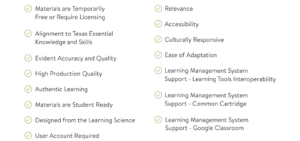Teaching with Comics: Resources for Teachers

Over the past few weeks I’ve been exploring teaching with comics—for reading, history and social studies, art, and science. Now for a roundup of resources to help you bring comics to the classroom!
The case for comics in the classroom
I hope you’re already convinced that comics can be a great addition to your curriculum, but maybe you need to convince your boss, students’ parents, or the librarian. Comics are a unique medium that combine words and pictures and can be used for everything from cheering students up to delivering information. Comics in curriculum can be compatible with Common Core, the Next Generation Science Standards, and other state and local standards. (For a great presentation on this topic, check out this slide show.)
When to use comics
As much as I love comics, I wouldn’t recommend using comics for comics’ sake. That said, whether you use one-panel “funnies” or graphic novels, comics can improve learning and the learning climate of your classroom. Writing about one-panel “funnies”, Kerry Cheesman says, “Displaying a comic at the start of the class helps focus students’ attention and sets the tone for the lesson that follows. You can even display the comic just prior to the start of class and remove it when class officially begins to encourage students to arrive on time.” Whether you’re getting laughs or groans, you’re still fostering a climate of learning in the classroom.
Incorporating comics into your curriculum
Some comics are ready to leap right into your classroom–they could even be used as a textbook! (I’m thinking of books like Larry Gonick’s Cartoon Guide to Statistics.) Others need to be integrated more carefully.
For help understanding comics, I highly recommend Scott McCloud’s Understanding Comics (I know I’ve mentioned it a few times already, but it’s really worth a read!). McCloud’s exploration of what a comic is and what makes it work will help you figure out how best to incorporate comics into your curriculum.
Comics–especially comic books and graphic novels–can easily be incorporated as literature because many are literature. For other subjects, there are an abundance of resources, like Reading with Pictures’ database of resources, Graphic Classroom’s reviews of comics, ready-to-use lesson plans from Comics in your Curriculum, or this handy guide on integrating comics into common core curriculum.
Some comic book publishers also create curriculum to accompany their books, such as Diamond and TOON, Night Flight (activities start on page 27 of their PDF).
Of course, you can always create new curricula or add comics to an existing curriculum. You can do this by using comics that you find, creating your own, or having your students create comics.
Copyright considerations
If you plan on incorporating comics into your curriculum, keep an eye out for comics you might be able to use and hoard them by saving images you find online or buying collections of comics in book form. Make sure you keep each comic’s copyright information intact (e.g. don’t erase the creator’s signature or byline). You are allowed to hoard comics and use them in class in a variety of formats–projected, printed, etc.–as long as you don’t give copies to anyone. (Depending on the copyright, you are not allowed to duplicate comics to give to students or other teachers, but you can tell them where to find comics and get their own copy. Don’t put comics on your website or on homework that goes home with students without first getting permission. For more on copyright, see CETUS or Creative Commons.)
Where to find comics
Comics are (almost) everywhere! There are plenty of educational and topic-specific comics (see below) but you can also find many “Sunday funnies” that relate to the subject you’re teaching (for example… Fox Trot on animal behavior/learning or Calvin and Hobbes on gendered nouns).
Comics, comics, comics!
I’m finding new comics all the time! I’ll be adding them to an ever-growing list here.







Amanda Deinhardt
Winifred,
I appreciate all of the resources you have provided within this blog post! Your argument for using comics in the classroom is persuasive and well supported by all of your research. I think it was quite thoughtful to provide a visual representation of all of the information (through the slideshow) especially since 65% of people are visual learners!
I work with a classroom full of third graders who are working on persuasive writing and they voted to write the principal to ask her to stock the library with more graphic novels. It seems the kids respond to graphic novels in exactly the way you say they are. It is amazing to see all of the common core standards that line up with using comics.
Thanks so much,
Amanda
Winifred Kehl
Thanks! I can't take credit for the slide show - that's the work of Amie Wright, Selection Program Supervisor at NY public library, and her colleagues Emily Weisenstein and Stephanie Gabelmann. I am going to be pulling all the resources I've posted together at http://winifredkehl.com/teaching-with-comics/